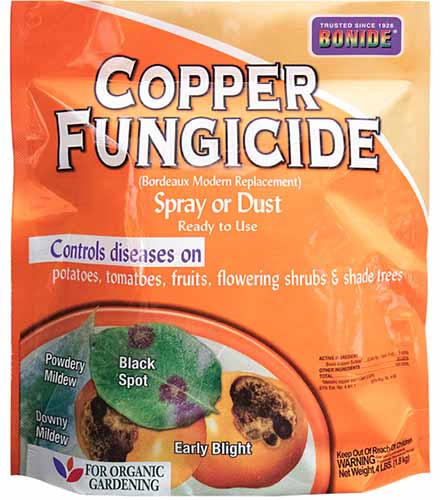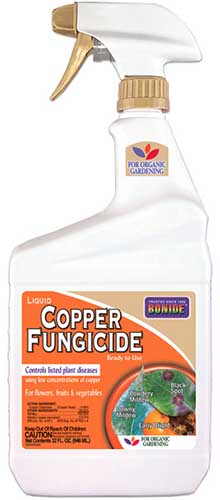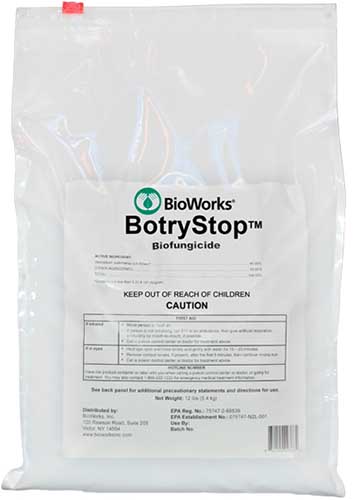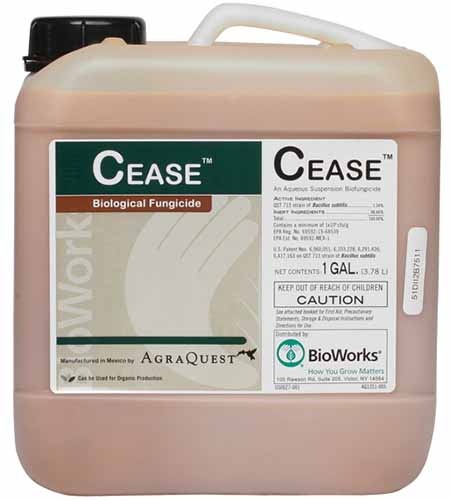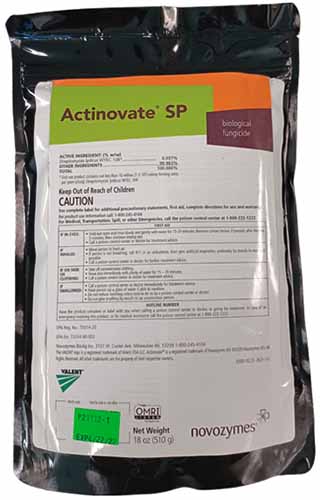With their delicate flowers and lacy foliage, you might assume that bleeding hearts are super fragile and prone to diseases. But, as the saying goes, you can’t judge a book by its cover, and these plants are actually surprisingly resilient.
In general, they’re just not bothered by insect pests, diseases, or even herbivores all that much.
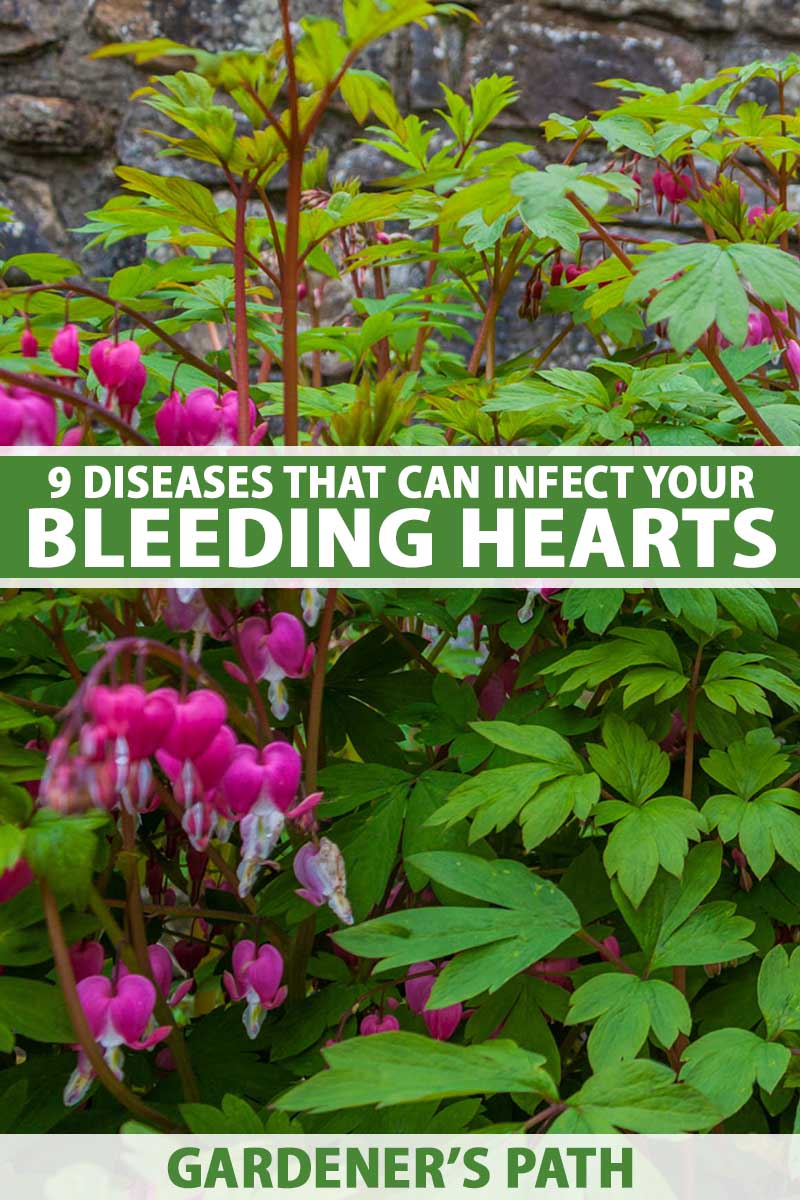
We link to vendors to help you find relevant products. If you buy from one of our links, we may earn a commission.
Of course, as soon as you say something like that, you’ll go outside and notice that your bleeding hearts are covered in some sort of fungus, or they’re wilted and yellowing Maybe I should be knocking on wood right now.
If your bleeding heart is struggling with some sort of problem, don’t lose heart (see what I did there?). It happens to all of us. I’ve managed to lose several junipers to diseases over the years, and they have a reputation for being nearly indestructible.
Take a deep breath and get ready. Here are the diseases that we’ll discuss, along with how to tackle them, coming right up:
9 Common Bleeding Heart Diseases
A quick note before we jump in: It’s always a good idea to inspect your plants closely once a week or so. Most diseases are much easier to treat if you catch them early.
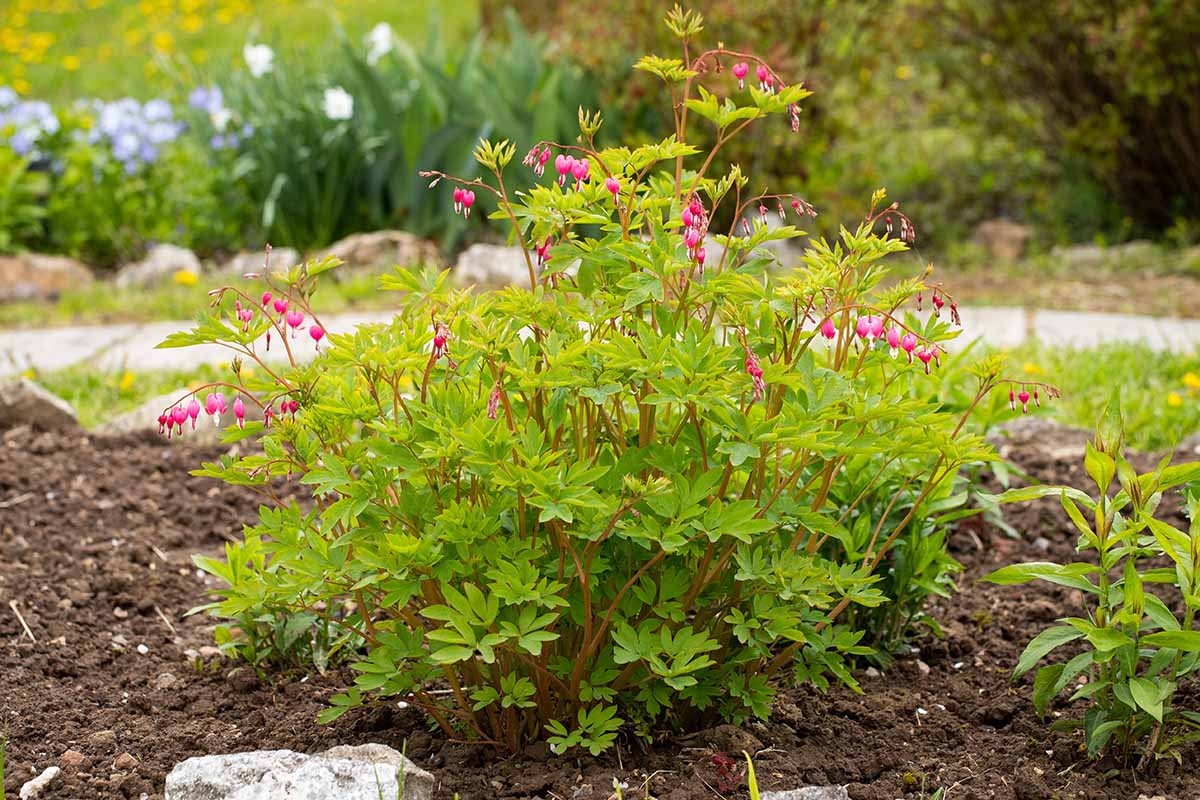
You should also always try to water at the soil level rather than on the leaves, and to make sure your bleeding hearts are well spaced. This goes a long way towards heading off fungal diseases, which are the most common issues seen in Lamprocapnos species.
If you need a refresher on how to grow bleeding hearts, check out our guide for cultivation instructions.
1. Botrytis Blight
Also known as gray mold, Botrytis blight is an extremely costly disease for greenhouse growers across the world, but thankfully it’s less prevalent in home gardens.
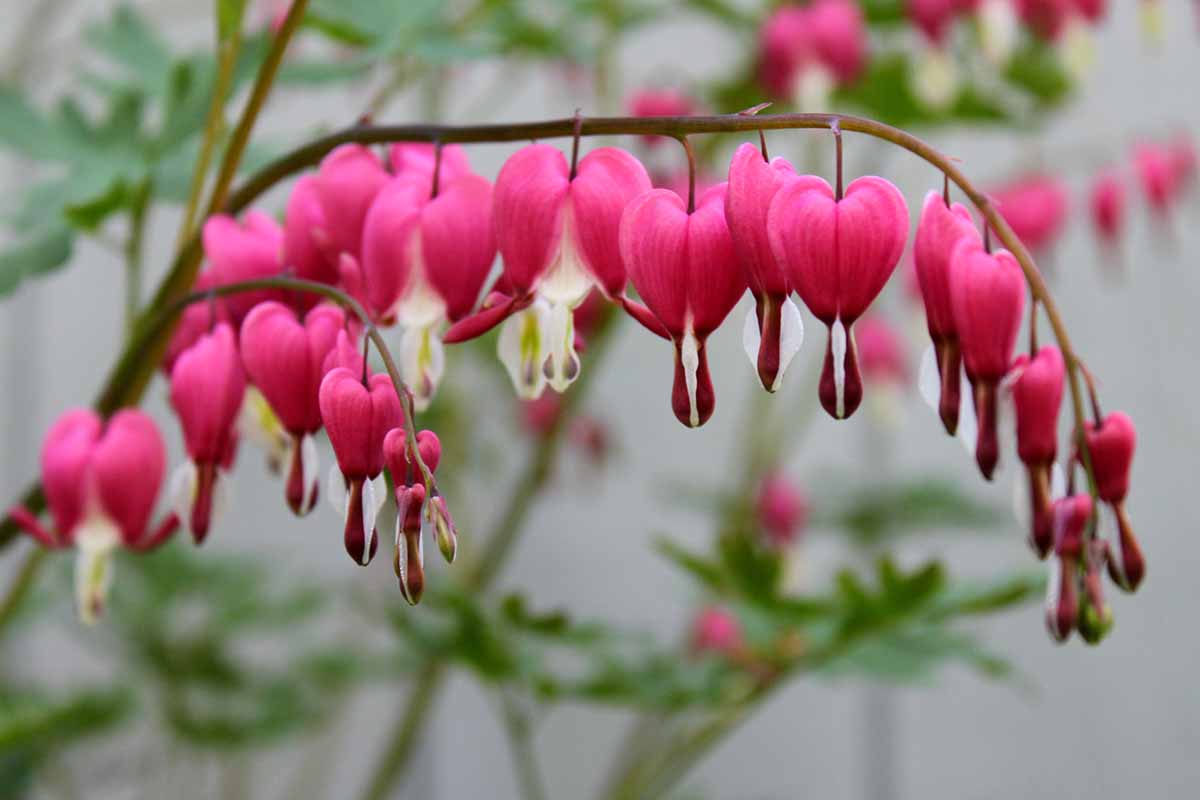
Nonetheless, it’s something to look out for, especially if your area commonly experiences cool, damp, and cloudy weather. Yep, looking at you San Francisco and the Pacific Northwest.
It’s typically caused by the fungus Botrytis cinerea, although there are a few other species in the Botrytis genus that can also cause gray mold.
The first sign is water-soaked spots and mushy brown areas on the stems, leaves, or flowers. You might not see it, but these spots are also forming on the roots at the same time.
If there’s enough humidity present – 85 percent or higher – tan or gray fuzzy mold will develop on the infected spots. As the plant tissue dies, black sclerotia (fungal masses) will develop.
The pathogen that causes this disease can survive on dead and living plant tissue, on seeds, and in the soil, which makes it a challenge to deal with.
Anytime you introduce a new plant, move soil from one area of the garden to another, or sow infected seeds, you can spread the disease. And it infects a huge range of different plant species, from bee balm and gardenias, to passionflowers and violets.
What can you do to prevent infection? Do your best to keep moisture under control. That includes both humidity and irrigation.
Keep your bleeding hearts well-spaced to reduce humidity, water at the soil level to avoid wetting the leaves, and irrigate in the morning to allow plants to dry out during the day.
Always remove any debris from the soil, and don’t over-fertilize, which can cause rapid foliar growth that may stress and weaken the plant.
If your best efforts at prevention fail and your plant becomes infected, you’ll need to turn to chemical treatments.
Copper fungicide can help. Apply it to all the above ground parts of the plant every two or three weeks as long as symptoms are present.
It’s important to start as soon as you see symptoms to have a chance at saving your bleeding hearts.
You can use a powdered product to sprinkle on your bleeding hearts, or mix it with water and spray the foliage, stems, and flowers. A pre-mixed liquid option is also available.
Bonide makes a dust that has saved my bacon more times than I can count. Grab a pound or four-pound container at Arbico Organics.
If you prefer to use a pre-mixed liquid, you can purchase a 32-ounce ready-to-use, 16 or 32-ounce hose end, or 16-ounce concentrate from Arbico Organics.
If you didn’t catch things early enough or you have an advanced problem on your hands, you’ll need to use a product that contains the beneficial fungus Unocladium oudemansii (U3 strain).
These products typically cost more, but they’re highly effective.
Arbico Organics carries a brand called BioWorks BotryStop in six and 12-pound bags.
If you have this disease in your garden and you are growing multiple susceptible species, you might want to make the investment.
2. Crown Rot
Crown rot, aka sclerotinia rot or southern blight, caused by Sclerotium rolfsii, is becoming a major problem across North America in a number of different plant species.
The fungal pathogen responsible for this disease lives in the soil and there are dozens of host plants, so it’s distressingly easy to spread.
Look for white, web-like mycelium that develops first on the lower stems, which will be followed by black sclerotia on the leaves and stems, and soil surface. The leaves will eventually turn yellow and wilt as the disease advances.
Providing good spacing between plants is the first step in avoiding this problem, as is watering at the soil level and not on the foliage.
In most cases, treatment is difficult and not very effective. However, there are a few fungicides worth trying. Only one of them is available to home growers, however.
Tenet WP contains two beneficial fungi, Trichoderma asperellum ICC 012 and Trichoderma gamsii ICC 080, that can control this pathogen.
Follow the manufacturer’s directions carefully and, with a little luck, you might be successful in limiting this disease.
If you don’t already have Tenet WP in your gardening arsenal, Arbico Organics carries it in 16-ounce bags.
3. Fusarium Wilt
Caused by the soilborne fungus Fusarium oxysporum, this disease prevents the roots from taking up water. This pathogen generally hangs out in areas that are experiencing temperatures in the 70s and above.
Fusarium wilt looks different from verticillium wilt (which we discuss below) in that it usually just impacts one side of the plant at first, not all of it.
Otherwise, the symptoms are similar: Wilting, yellowing or brown leaves and stems, and eventual death of the plant.
Sadly, there aren’t many effective treatments for this disease.
In general, by the time you notice the symptoms, the disease is well advanced and you’ll have to pull the plants and dispose of them.
If you caught the problem early when just a few leaves are wilting, you can use a biofungicide containing Bacillus subtilis.
Arbico Organics carries CEASE Biological Fungicde in gallon- or 2.5-gallon containers.
It’s one of the few effective treatments for this disease.
4. Leaf Spot
Fungal leaf spot is a common problem in bleeding hearts. That’s because the fungi in the Stemphylium genus that cause it love the cool, wet conditions that these plants thrive in.
Symptoms present as circular or oval spots that are grayish-green in color on the foliage. Eventually, those spots become larger and larger and they turn brown and dry.
This disease also affects many other ornamentals and vegetables, so it can spread readily through a garden. Seeds can also be infected, so the pathogen can be spread unknowingly by breeders and gardeners who start their plants from seed.
The pathogen thrives in moderate temperatures between 64 to 75°F and it loves moisture. Rain, humidity, irrigation… it basks in it.
Unfortunately, there isn’t an effective cure for leaf spot yet, but you can prune off the infected leaves and hope for the best.
Don’t use an infected specimen for propagation and be sure to pull it out of your garden if you have other plants nearby that you don’t want to contract the disease.
5. Powdery Mildew
If it’s your first time ever seeing powdery mildew on your plants, you might think someone walked along with a bag of flour and sprinkled the leaves with the white powder. This is the mycelium of fungi in the Erysiphaceae family.
On established specimens, it’s no big deal, but on those just emerging from the ground in the spring, it can cause serious problems. That’s because the fungi attacks developing shoots and causes them to be stunted or – in advanced cases – to die back.
To learn more about this super common disease and how to deal with it, check out our guide.
6. Root Rot
Root rot is caused by water molds (oomycetes) in the Pythium genus.
The symptoms look a lot like verticillium or fusarium wilt in that your plant starts to wilt and stops growing. As the roots rot underground, the plant eventually collapses and dies.
To confirm that this is the problem, you can dig up the roots and check them out.
If they’re all black and mushy and the soil isn’t extremely soggy, you can be pretty sure this is the problem. If the soil is waterlogged, it’s possible that the roots have been drowned by too much water rather than being infected by a pathogen.
If you catch this disease early enough, before the plant has collapsed, you can treat it with Tenet WP or Actinovate SP.
The latter is a biofungicide that contains Streptomyces lydicus, a beneficial bacterium.
Grab an 18-ounce bag of Actinovate SP at Arbico Organics and follow the manufacturer’s directions for application.
7. Rust
Rust is caused by several different fungi in the Pucciniaceae family.
Cerotelium dicentrae, for instance, is more common in North American native species (Dicentra formosa or D. eximia), but there are many species that will attack imported species (Laprocapnos) as well.
Rust is aptly named because it appears as little rust-colored spots all over the leaves and stems. It looks a lot like the foliage has suddenly started rusting like an old truck in a field.
Fortunately, because rust has been a problem in cultivated plants for so long and because it impacts so many species throughout the world, scientists and experienced gardeners figured out some pretty effective methods of dealing with it.
To start with, try using a copper fungicide. I keep Bonide Liquid Copper Fungicide in my gardening toolkit at all times because it can be used to address so many problems.
Spray the plant, taking care to saturate the stems and the undersides of the leaves, once every two weeks until symptoms are gone.
CEASE, which we discuss above, is an effective second option if copper isn’t cutting the mustard.
8. Tobacco Rattle Virus
Tobacco Rattle Virus (TRV) is a relatively new disease in bleeding hearts, discovered in the US in the year 2000.

Since then, it has been spreading rapidly on divided plants and those propagated by cuttings.
To make matters worse, the symptoms generally only develop when the weather is cool, so the virus can be present without showing any signs and be spread unwittingly.
When symptoms appear, at first you’ll see yellow streaks and mottled areas on the foliage. Eventually, the plant begins to wilt and die. Sadly, there is no cure.
It’s spread by nematodes in the Paratrichodorus and Trichodorus genera, as well as on cuttings from infected specimens.
Because you can’t see nematodes and there’s no way to know that they are present until the disease pops up, there aren’t any good preventative measures you can take.
Don’t use an infected plant for any form of propagation. Once your bleeding heart begins to show symptoms, it’s best to just pull it up and dispose of it in the trash.
Then, treat the soil with a nematicide to kill any nematodes.
9. Verticillium Wilt
While not one of the most common diseases, when it does pay a visit, verticillium wilt, caused by Verticillium albo-atrum and V. dahliae, is a serious problem.
When your plant has vert (as we sometimes call it), it can be difficult to tell whether the symptoms are related to this disease or something else.
That’s because the plant will simply wilt and look all droopy and sad. After a little while, the stems and leaves will turn yellow or brown and then the plant will collapse. Sounds a lot like underwatering, overwatering, pest infestations, and some other diseases, right?
Usually, once the symptoms appear, the disease has been present for a while. To be absolutely sure, you can take a sample to your local extension office for testing.
If you are neither under- nor overwatering your plants and there are no signs of any pests, go ahead and treat with a fungicide that contains Streptomyces lydicus, like Actinovate SP.
If you’re lucky and caught the disease early, there’s a good chance that your plant will recover. If not, you’ll need to pull the plant and destroy it.
In the future to prevent the problem, keep plants well-spaced, water at the soil level, avoid over- or underwatering, and don’t let plants become stressed. You should also avoid high nitrogen fertilizer.
Don’t Let Diseases Stop Your Bleeding Hearts From Shining
Sure, there are several diseases that can plague these beauties, but if you keep them happy by providing the right light exposure, food and water, and proper spacing, most bleeding hearts tend to be pretty tough.
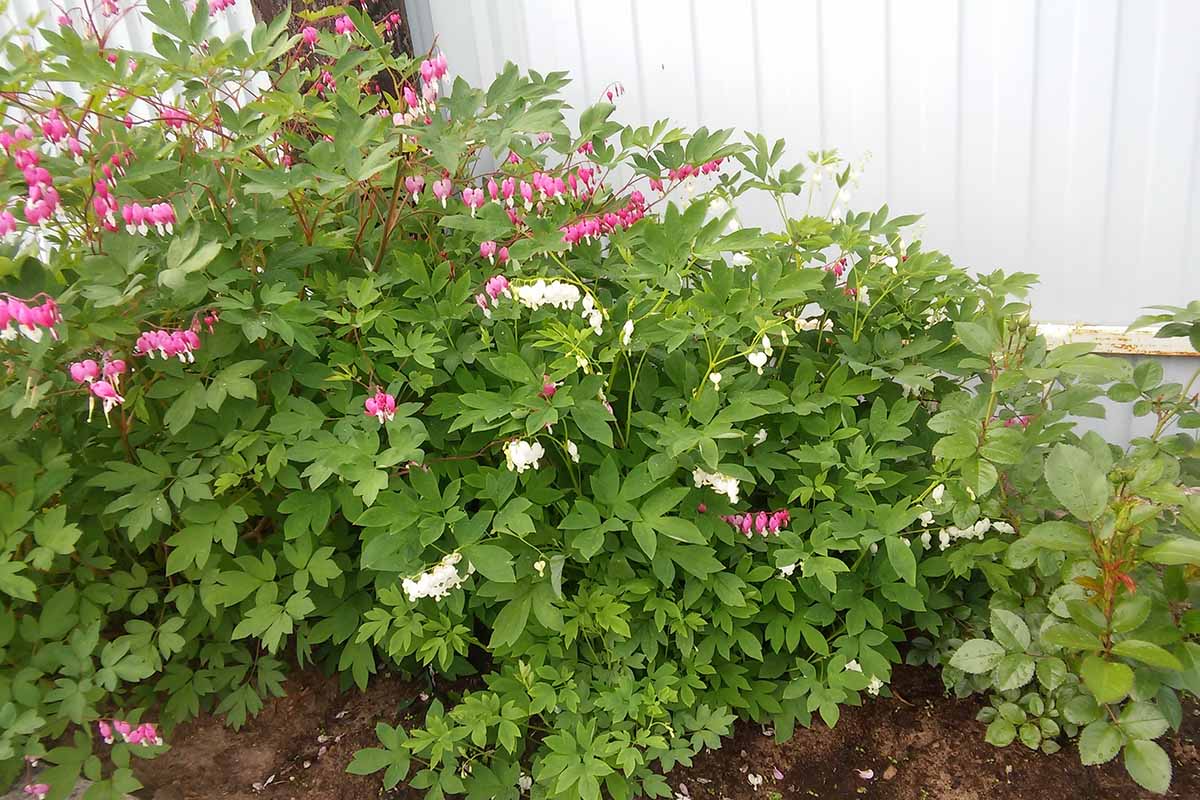
What was your plant suffering from and what did you do to resolve it? We hope you found the answer here. If so, let others know what worked for you in the comments section below.
If you’re looking for even more information on how to care for your bleeding hearts, we’ve got some guides for you to read next:
